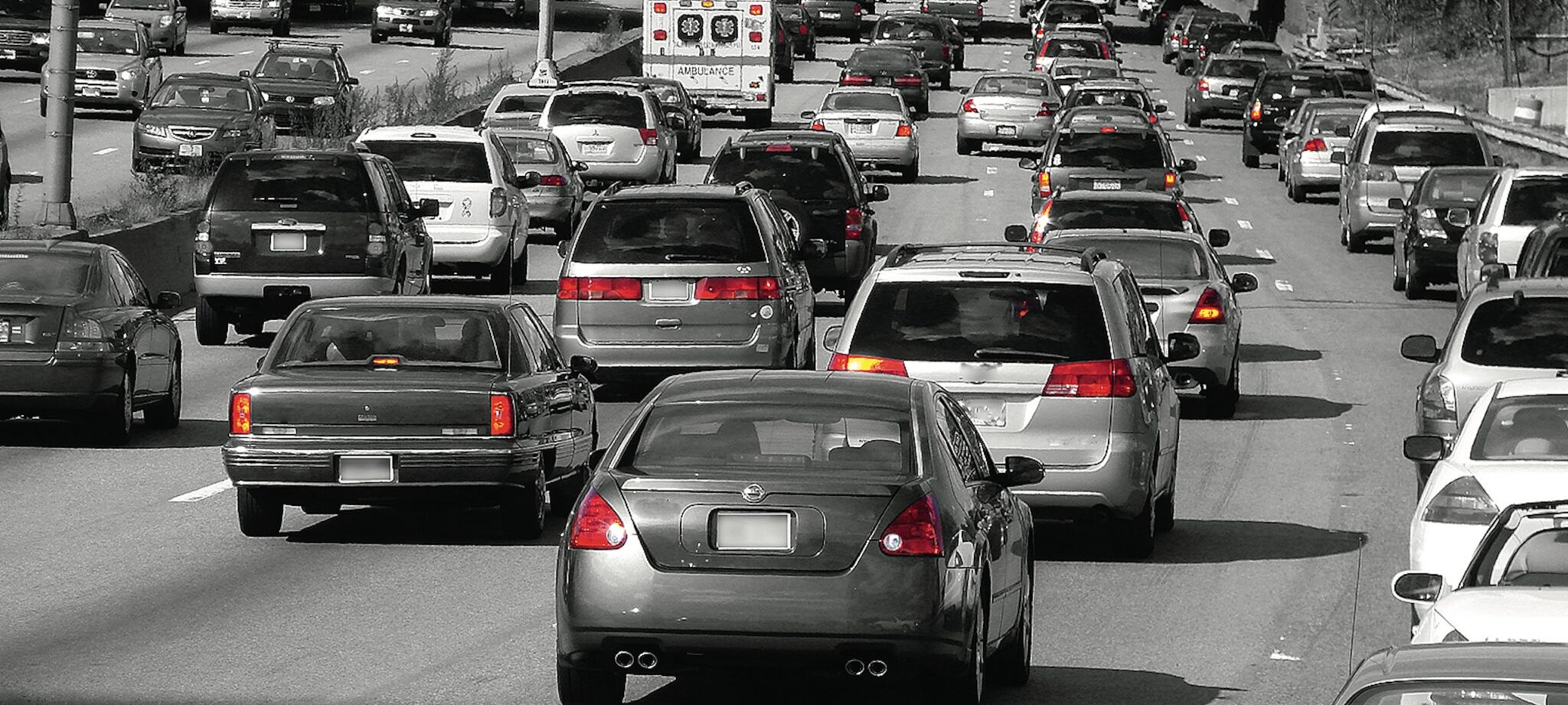Ten days before Earth Day, on April 12, the Biden administration announced plans to significantly curtail vehicular emissions through unprecedented regulations that, if finalized, would mark a turning point in the electrification of everything from passenger vehicles to big rig trucks. The proposals, which target tailpipe pollution directly, represent the Environmental Protection Agency’s most stringent standards to date.
“These standards are the biggest step that we can take as a country to cut pollution from vehicles,” said Luke Tonachel, MPP ’04, senior director of the clean vehicles and buildings program at the Natural Resources Defense Council (NRDC), an environmental advocacy nonprofit. Tonachel noted that “transportation is responsible for 27 percent of carbon pollution in the U.S., and cars are the primary contributor to that transportation pollution.”
By imposing tight caps on tailpipe emission, the proposed regulations are expected to force a rapid rollout of electric vehicles. If the rules go into effect, EVs could account for the sale of 67 percent of new light-duty vehicles (passenger cars and small trucks) and 46 percent of new medium-duty vehicles (larger trucks and vans) by 2032, according to projections from the EPA. A separate rule targeting heavy-duty vehicles is predicted to electrify roughly half of new buses and a quarter of long-haul trucks. By comparison, electric vehicles accounted for less than 6 percent of the 13.8 million new cars and trucks sold nationwide last year.
Together, these regulations are expected to prevent nearly 10 billion tons of CO2—or more than double the United States’ total 2022 emissions—from being released into the atmosphere over the next 30 years.
“If EPA adopts the strongest version of what they have proposed, new cars will emit 70 percent less carbon pollution than today’s cars,” said Tonachel, who supported the NRDC in advocating for new emission standards. “That’s a really important and needed reduction for us to meet our climate goals.”
Public health is another winner, according to Tonachel. The agency’s new regulations will reduce dangerous pollutants, including smog-causing nitrogen oxides and particulate matter, which contribute directly to asthma, heart and lung diseases, and premature death.
The proposed rules, which complement the Inflation Reduction Act’s EV infrastructure incentives, are expected to be finalized by next year and would take effect starting with vehicles manufactured in model year 2027. But already they’ve faced some pushback, most notably from Republican lawmakers along with Senator Joe Manchin (D-WV), who argued that regulations will force greater reliance on Chinese technology and exports.
However, the biggest challenge may come from the fossil fuel industries and their allies who stand to lose the most in a shift to clean energy, according to Tonachel. Addressing the “too far, too fast” concern espoused by some critics, he said it ignores the degree to which automakers have already committed to electrification.
“The industry itself has already invested over $200 billion in domestic manufacturing for electric vehicles and over $100 billion of investments in battery technologies,” he said. “Having strong standards ensures that those investments pay off.”
From a consumer perspective, EVs are also a boon, Tonachel said. While the upfront cost of an EV is currently higher (though that’s expected to drop), the EPA estimated that buyers will save an average of $9,000 on fuel, maintenance, and repair costs in eight years of ownership.
“There’s large consumer demand for electric vehicles because of their performance and, frankly, because of their convenience,” Tonachel said. “This rule won’t force anybody to choose the vehicle that doesn’t work for them. But it does improve the level of choice that consumers will have.”


















